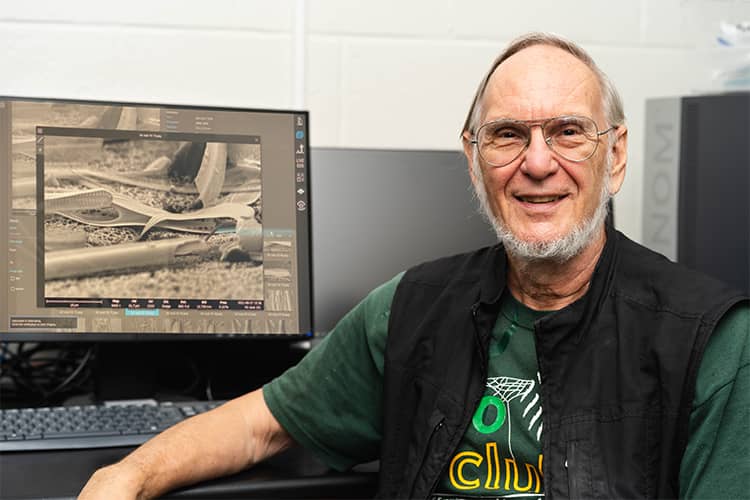- Home
-
Admissions
-
Academics
-
Students
-
Research
-
Research Centers
- Cancer Research Center
- Center for Excellence in Development Disabilities Education, Research & Service (CEDDERS)
- Center for Island Sustainability (CIS)
- Marine Laboratory
- Micronesian Area Research Center (MARC)
- UOG Land Grant | agInnovation Research Center
- Water and Environmental Research Institute (WERI)
-
Programs and Departments
- Guam EPSCOR
- Guma' Tinemtom - Micronesia Data Laboratory
- Pacific Islands Climate Adaptation Science Center (PI-CASC)
- Pacific Islands Cohort on Cardiometabolic Health (PICCAH)
- Research Corporation of UOG
- RFK Memorial Library
- UOG Press
- UOG Sea Grant
- University Libraries Digital Team
- NASA Guam Space Grant
- NASA Guam EPSCoR
-
Research Centers
-
Outreach
- Giving
- Alumni
-
About
UOG species discovery published in Diatom journal
UOG species discovery published in Diatom journal
UOG species discovery published in Diatom journal
12/20/2021


Christopher Lobban, a University of Guam professor emeritus of biology, has discovered an interesting new species of diatom from the Marshall Islands. His discovery is in addition to two potentially new diatom species found earlier this year by UOG student Gabriella Prelosky and five potentially new species found earlier this year by UOG student Britney Sison.
The study, which was funded by the University’s National Science Foundation EPSCoR grant, was accepted in October for publication in the peer-reviewed journal Diatom, a publication of the Japanese Society of Diatomology.
Diatoms are single-celled algae found in oceans, lakes, and rivers. They are considered important primary producers on Earth. According to Lobban, diatoms produce an estimated one-fifth of the oxygen in the air we breathe.
The new species of diatom, Licmophora complanata, was named for its flattened cell wall.
According to Lobban, the diatom was found in a sample of algae from Majuro Atoll that he collected in 1990. Licmophora is a genus of benthic diatoms. Diatoms within this genus are common and epiphytic — meaning that they perch on seaweeds, like orchids perch on trees.
“It’s a really odd-looking Licmophora,” Lobban said. “Licmophora are sort of people-shaped. They have a top and bottom and a front and back. The dead shells can usually be seen in the front and back views, but this one was always giving me a side view.”
Lobban was able to thoroughly examine the specimen once the Microscopy Teaching & Research Laboratory, which he runs, received a new Scanning Electron Microscope through the EPSCoR grant in May 2021.
“The microscope has a stage that allows you to tilt it up to 80 degrees while examining a specimen,” Lobban said. “When I did that, I was able to see its shape, which is actually kind of complicated.”
According to Lobban, this is not the first time he has named a species of Licmophora.
“It’s not a huge genus and there are not many people working on it in the world. Most of the species here seem to be new to science. This is the 16th Licmophora I’ve named,” Lobban said, “and I’m not done with them yet. I’m working on a paper now with seven more species. It and several of the others have student co-authors.”
